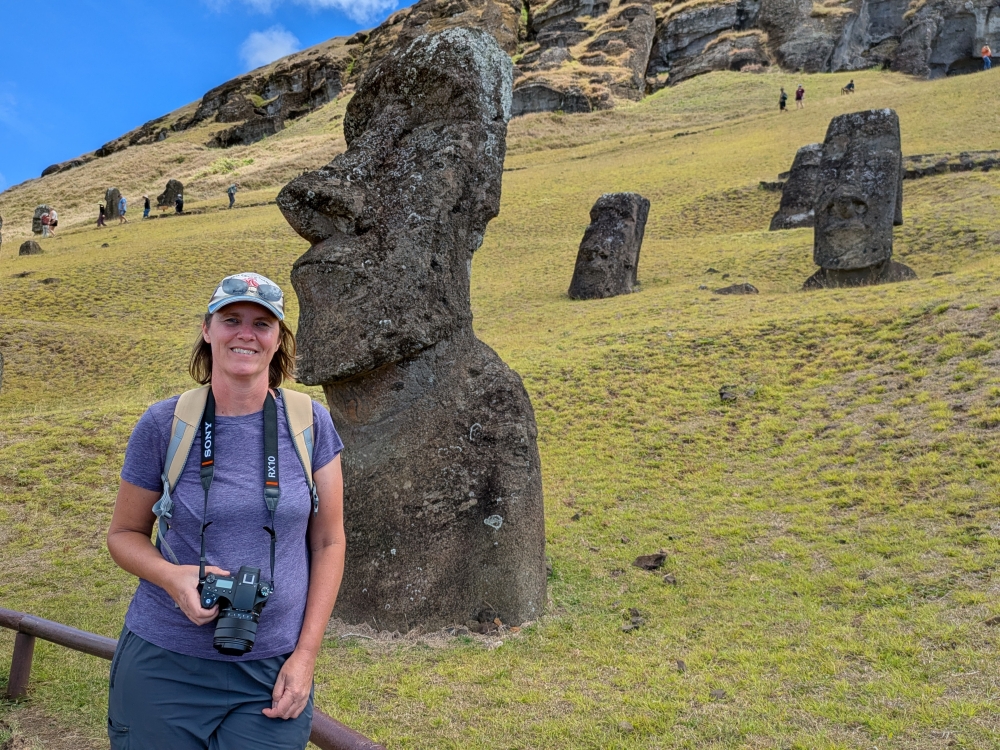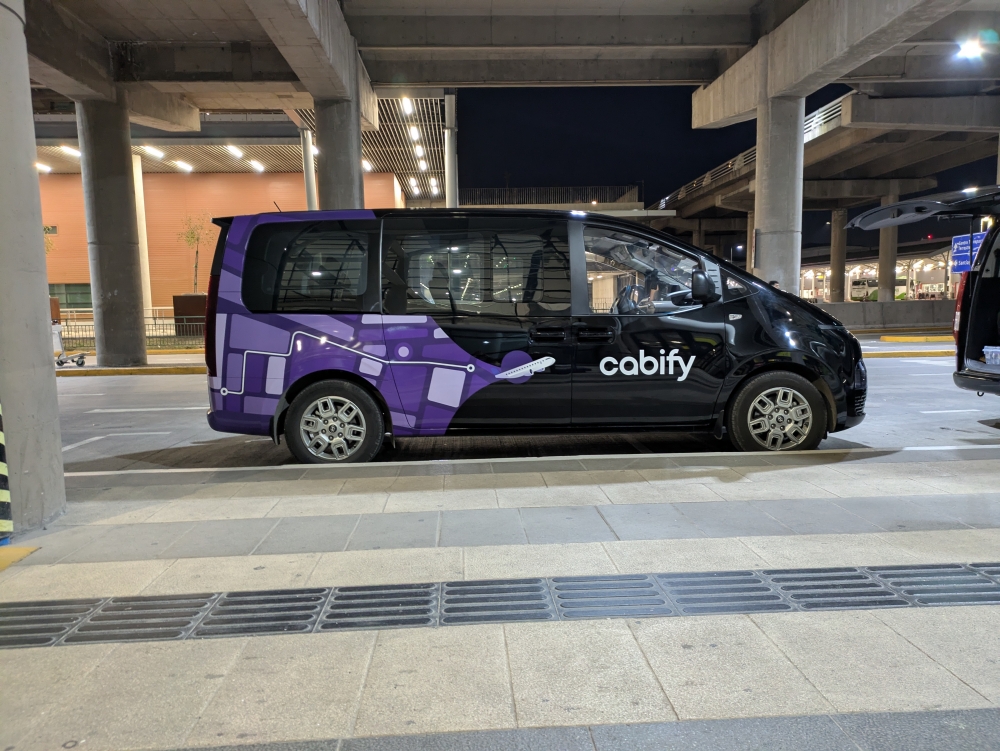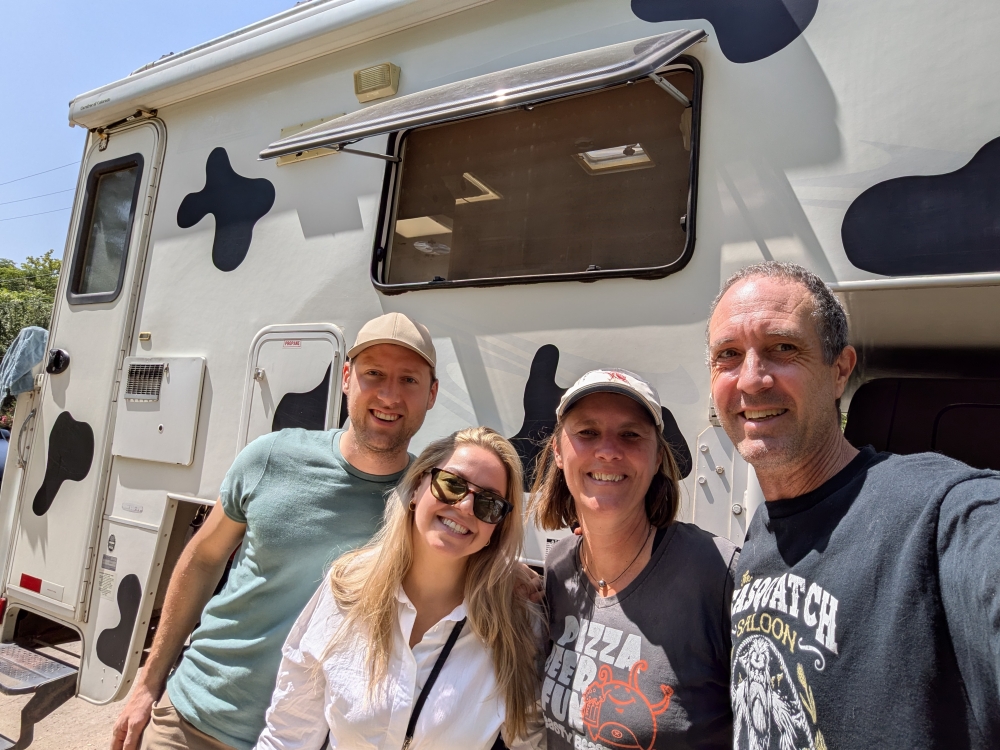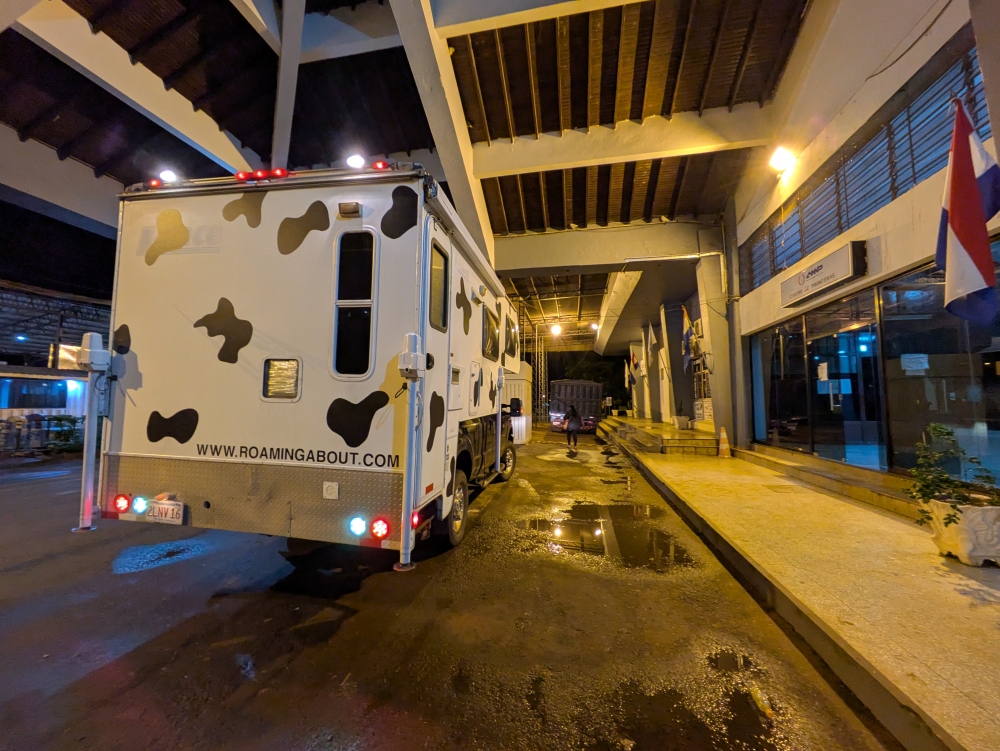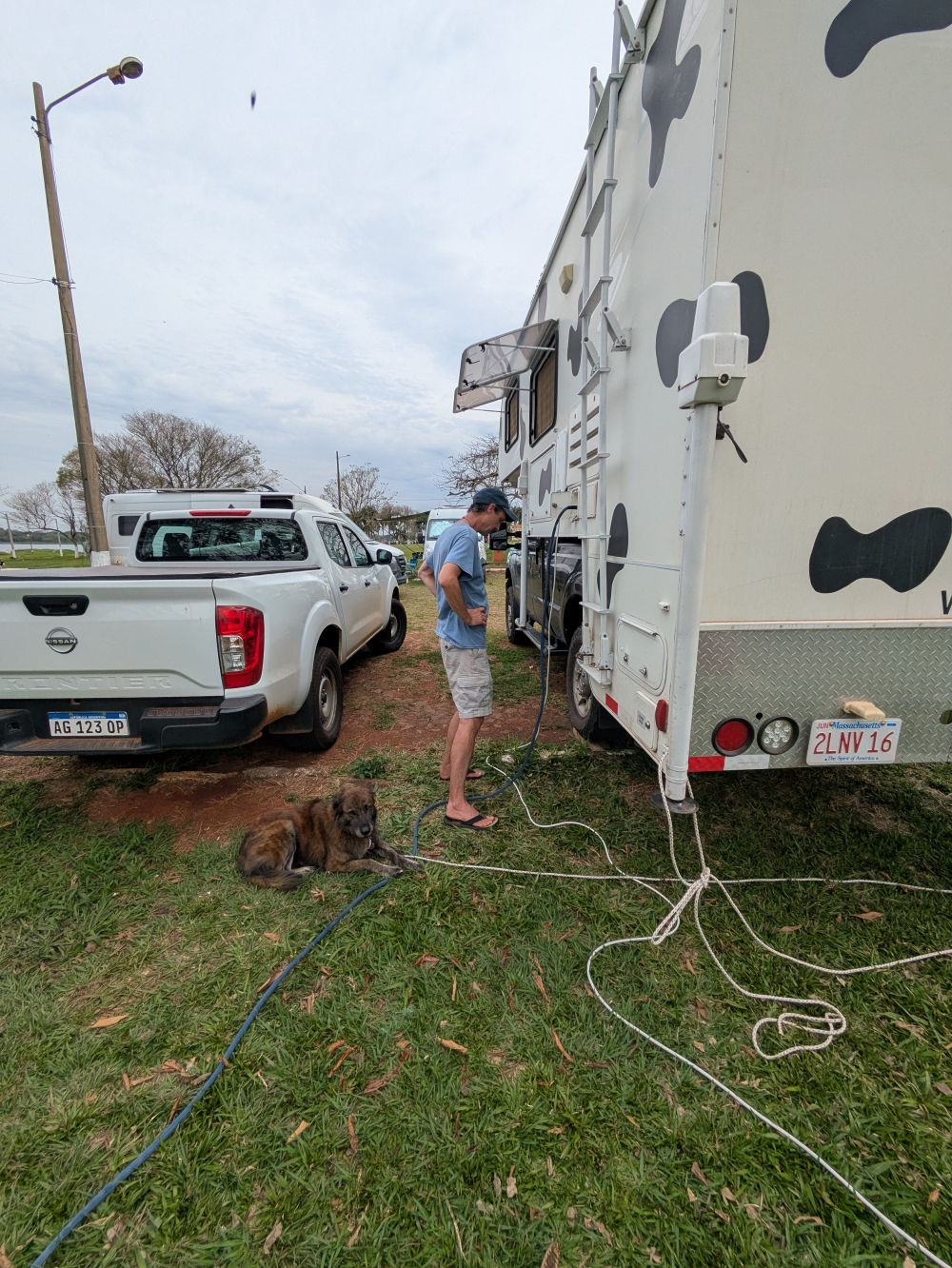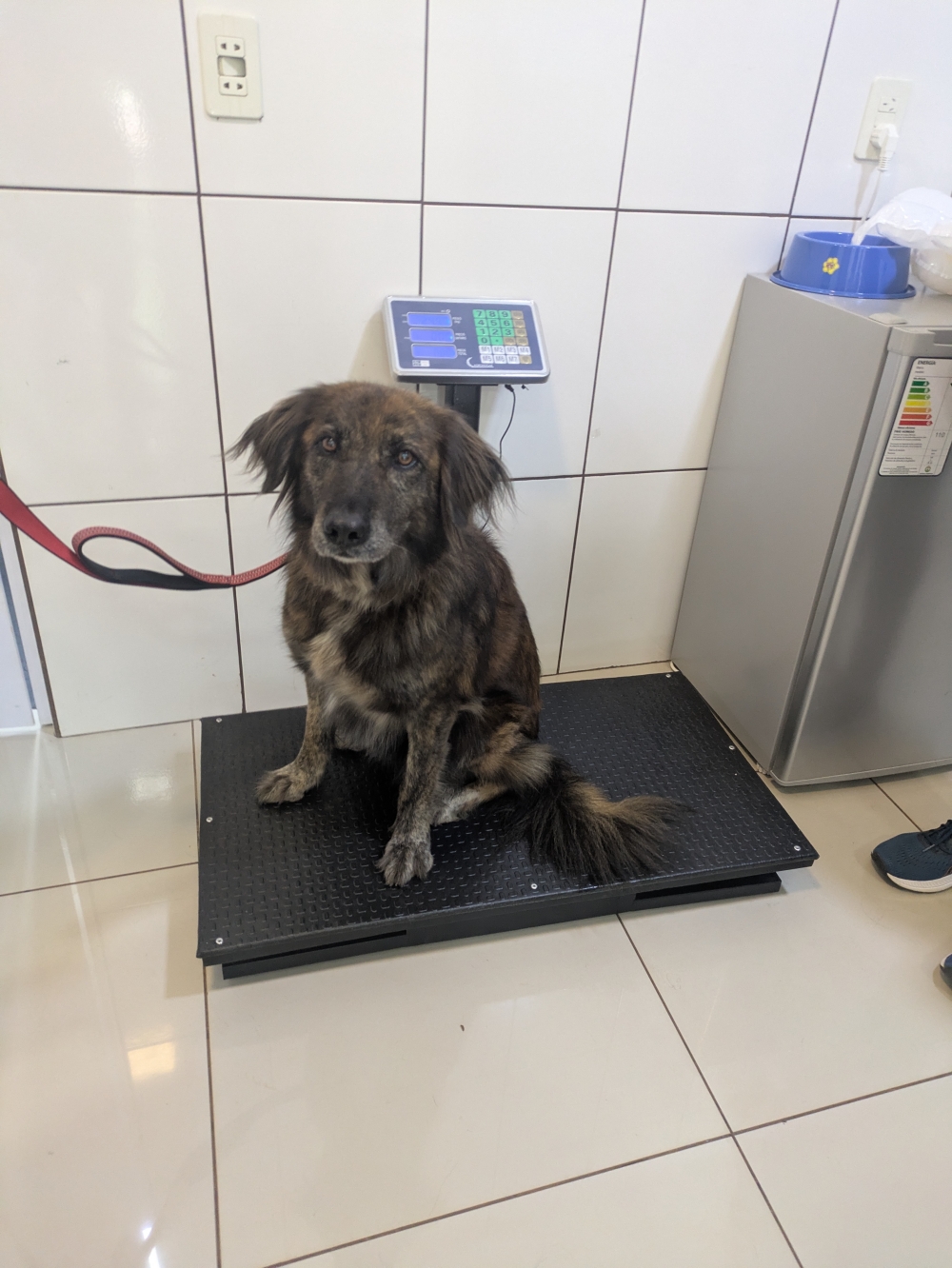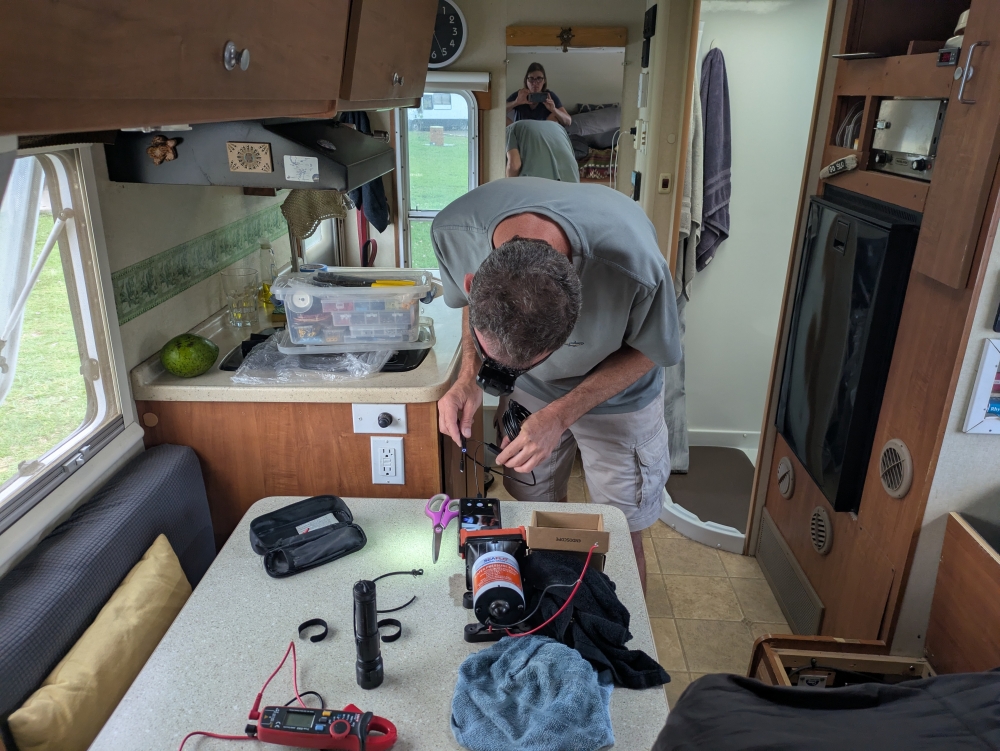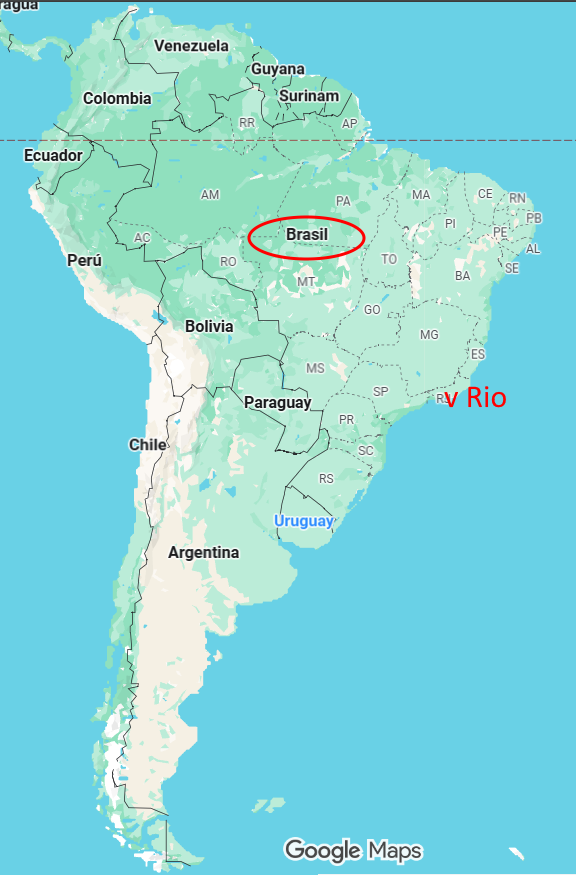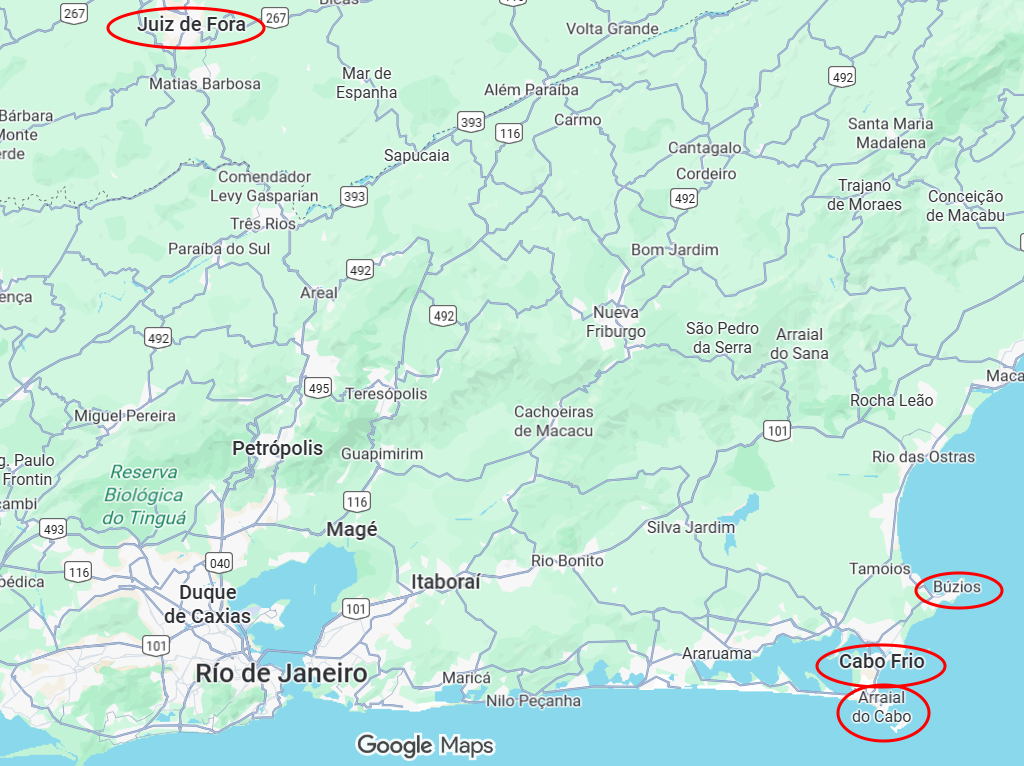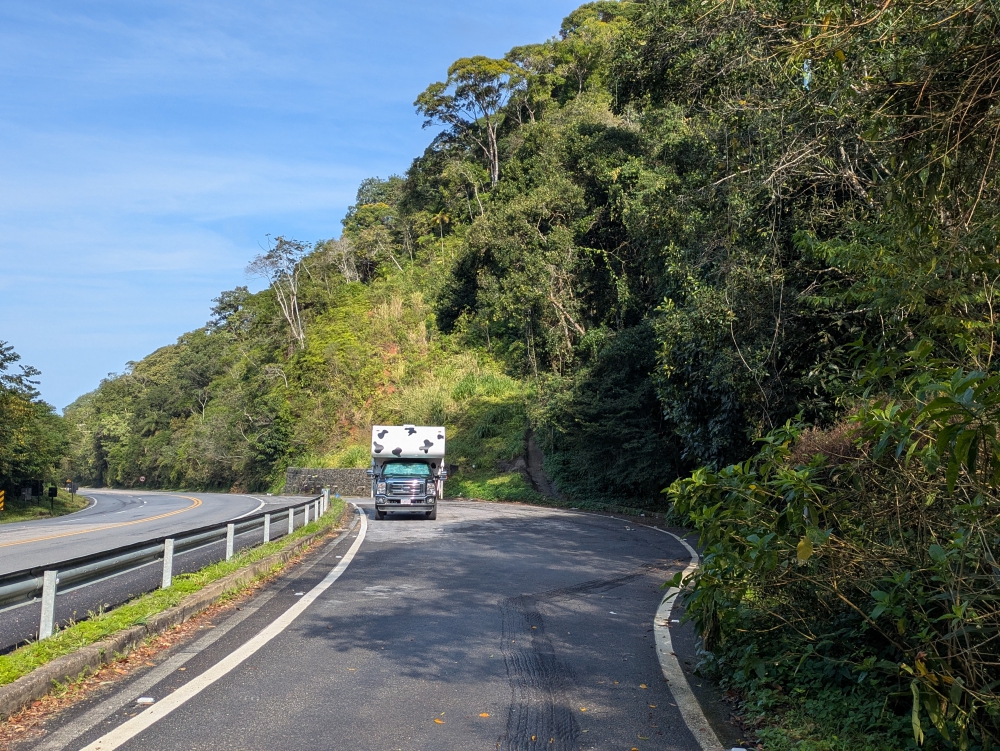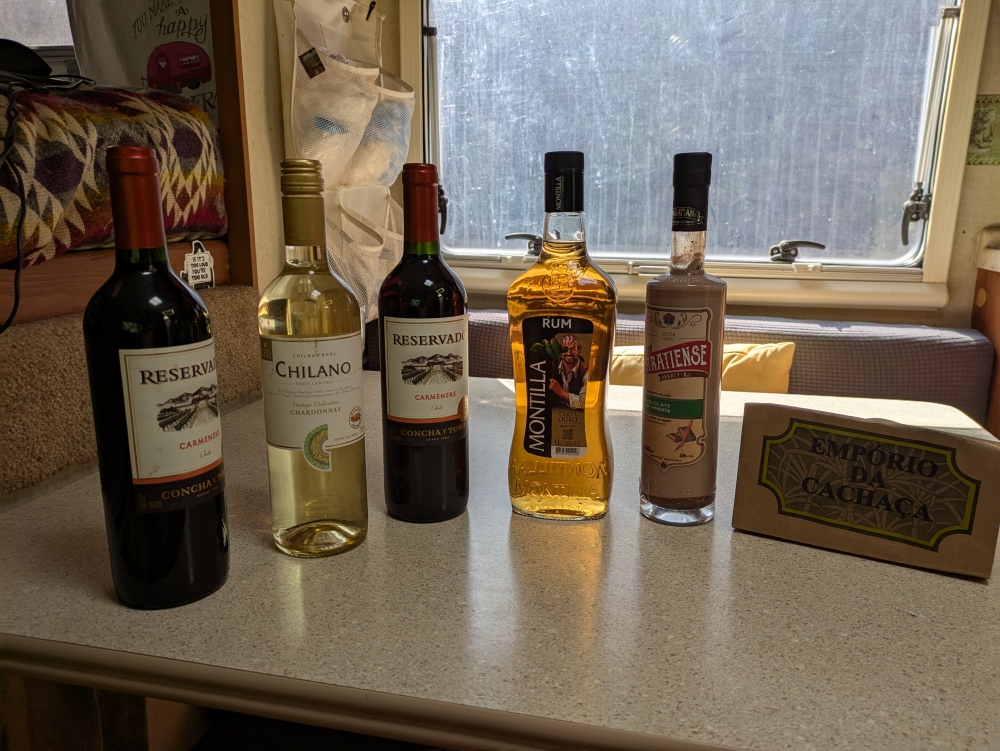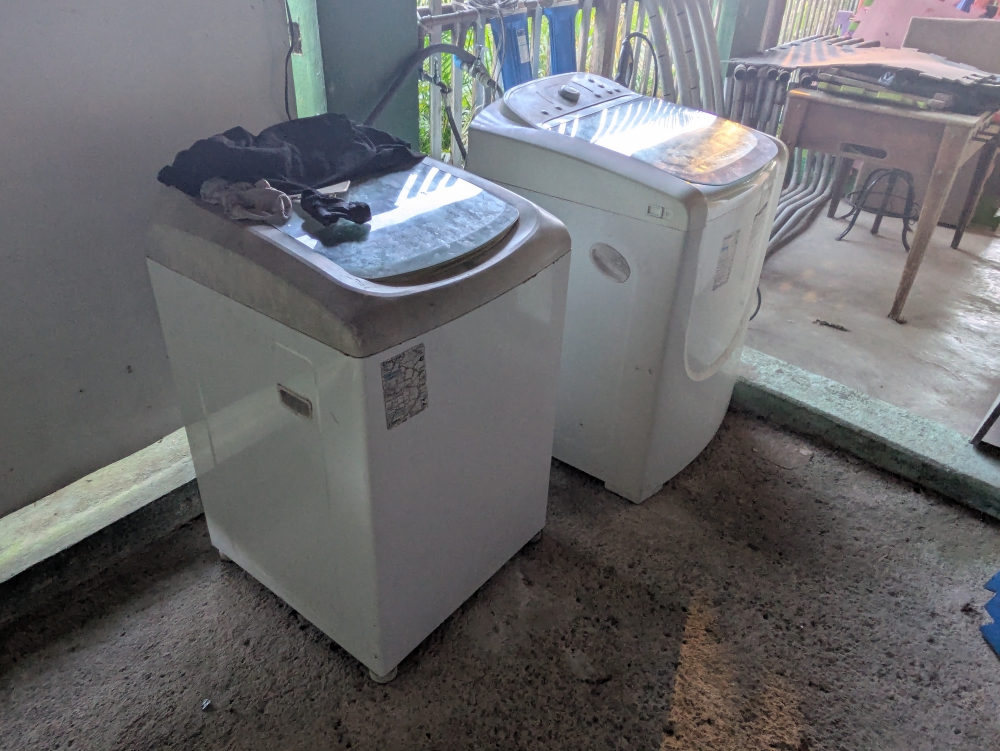
Every month, I post a report of our expenses to show that it is possible to live a comfortable, exciting, and adventurous life without breaking the bank. The less money you spend, the less you need to make. 🙂
This report includes ALL of our expenses, in US$, for two adults and one 60-pound dog (we adopted Maya on June 4th, 2019). Under groceries we incorporate food, produce, and non-alcoholic drinks predominantly bought in supermarkets. Toiletries belong in that category as well. Dining out means eating at a restaurant/event or purchasing take-out food. The health category covers non-prescription medicines and vitamins/supplements; medical contains prescription drugs and doctor’s visits. Because of our income level, Mark and I are eligible for free health care within the state of Massachusetts. For check-ups and extensive care, we return to the US East Coast. Other health issues are resolved locally and out of pocket where needed.
In October, Mark, Maya, and I covered long distances from Paraguay back to Chile in our home on wheels, Thirsty Bella.
(As always, click on or hover over photos in photo galleries to read their captions.)

Maya seemed more relaxed on this road trip.

Hitting the long road again on a rainy day in Argentina

Lots of obstacles on the road

Some decent pavement as well, that first day

Traffic jams due to a Saturday procession

On day three, we had better roads
When you’re on a tight budget, every unexpected expense disappoints. But when money gets wasted just because you are in the wrong place at the wrong time, it hurts. We had a few of those unfortunate occurrences last month.

Driving towards Uspallata in Mendoza province

The stunning Andes

Welcome to Chile

Crossing the mountains

The famous Los Libertadores pass

Driving down the winding road

Road work
Our October car expense — including the fuel cost — matched the amount of September and for the same reason: we drove a lot! As a matter of fact, we basically crossed the South American continent from east to west again, to end up at the Chilean coast 1,500 miles (2,300km) further.

Getting fuel with just the truck on an excursion

Topping up with fuel in Argentina

Filling up with gas again before crossing the border with Chile
Apart from gasoline ($625), we spent money on tolls, liability insurance for Argentina (one month) and Chile (six months), car soap, and a parts manual.

Cueing at the toll booth, before leaving Argentina

Toll near the border

Toll booth in Argentina
At $410, our grocery bill was higher than usual, but this is understandable. I mentioned in a previous post that one of the highlights of Paraguay (Hohenau in particular) is the availability of German goodies, like incredible bread, sweets, and cured meats. That’s where the extra food money went!

Don Otto’s German delicatessen store in Bella Vista, which is close to Hohenau

Produce section in the awesome Jumbo grocery store

We shop at the more affordable Lider store

Goodies from the Chilean grocery store – Other than the wine, these items are very expensive in Argentina, so we don’t buy them there.

Another visit to a Lider supermarket

Typical fresh buns in Chile

Yummy produce for the equivalent of $5

The Carrefour in central Mendoza is a great grocery store.
Some of our unexpected expenses became part of the miscellaneous category: a hefty fine in the Mendoza province ($175), hiring a mechanic ($90) to check out a van we were curious about (a failure), and a paid ad on an international vehicle website to try and sell Bella ($34).
Let me give you some background about the painful fine. In South America, EVERYBODY passes slow trucks — and us — over a solid yellow (or white) line. Everywhere and all the time. Even when it’s not safe. We’ve done it as well, but always in a safe manner.
On this particular occasion, the road was clear, straight, and slightly uphill. We’d already had a crappy day due to the usual challenges trying to get things done in a third-world country, and Mark passed a slow truck driver over the solid yellow line. At the top of the hill… you guessed it. A police car was waiting and an officer stopped us. We felt like they were targeting tourists, but remained friendly. We pleaded, yet couldn’t talk ourselves out of a fine. They did not try to get a bribe. This was all legitimate but unfortunate and hypocritical.
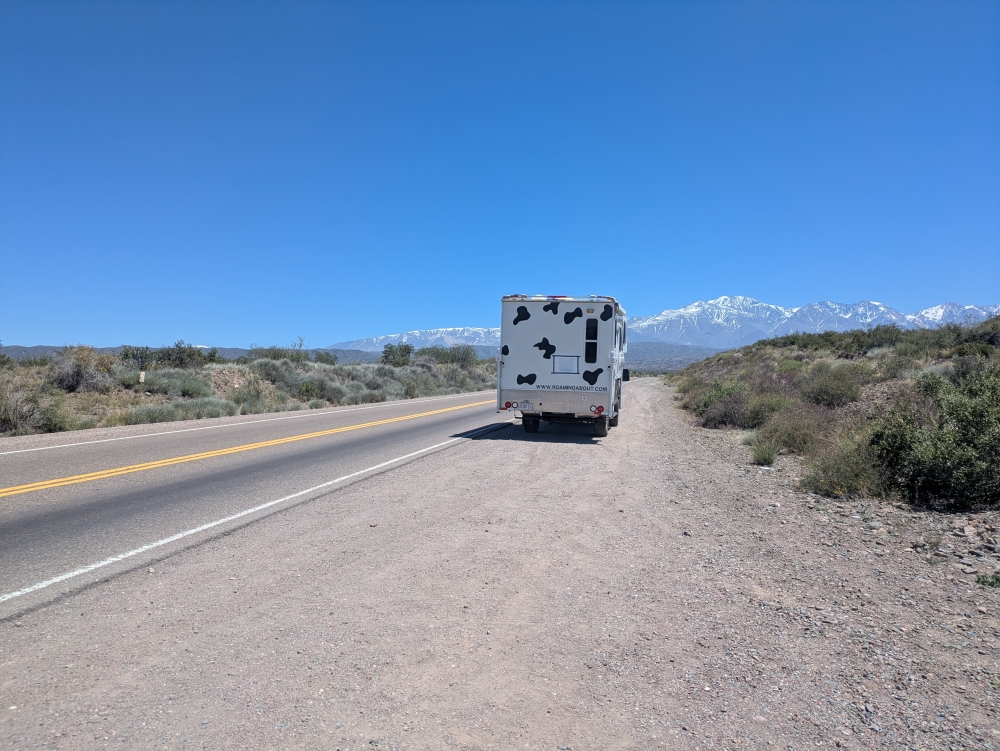
Pulled over once we started enjoying the scenery
The officer in charge wrote us a ticket with a fine to be paid online. We had two options: pay the discounted fee of $175 within the next three business days, or $320 afterward. The cop returned Mark’s driver’s license and after an hour, we went our way again. We were leaving the country the following morning and we did not intend to pay this fine. After a lot of research, we learned that this would likely never hurt us. Foreigners rarely pay fines.

Getting our first ever fine
And then we realized that whoever would next own Bella might visit Mendoza and drive back into Argentina. And then our conscience started acting up. We didn’t want anyone else potentially getting in trouble for our misfortune, disappointment, and stubbornness. So, we paid up before the rate increased. Sigh.
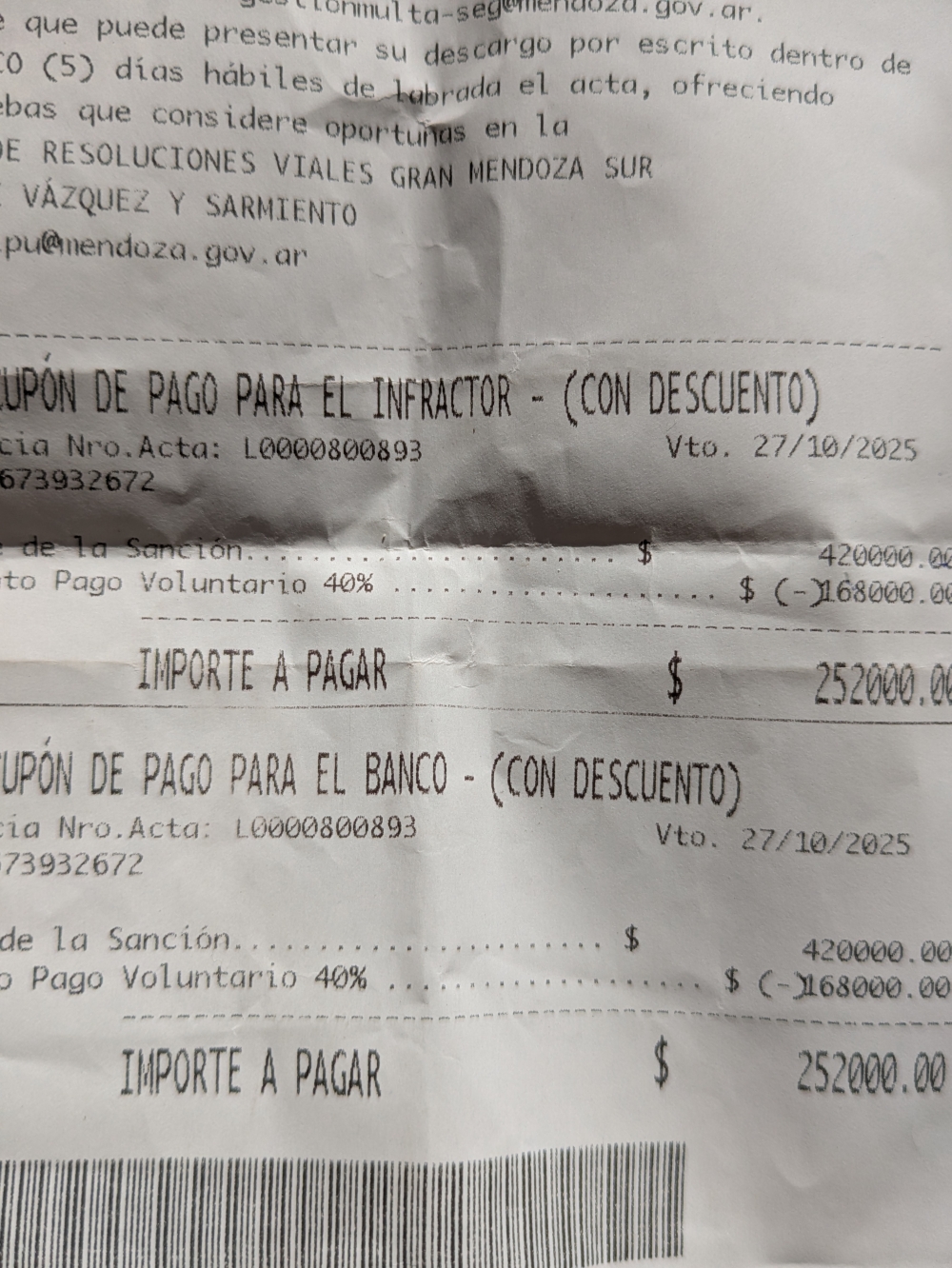
We decided to pay our steep fine.
We usually don’t stay in pay campgrounds, but we needed a break from driving and wanted to sit still for a while, so the $160 we paid for camping was planned. We mostly enjoyed our three weeks at the Manantial Campground in Paraguay and would have stayed longer if it wasn’t for the heat, bugs, and more pressing matters calling us back to Chile.

Home for three weeks at Camping Manantial – We did move twice a week!
The rest of the month, we camped for free.

Camped at Sauce de Luna – a return visit

Free camping spot to end our second long day on the road

Early start in Uspallata to reach the border by 8am

Our free urban camp spot in Santiago de Chile

Not bad for a truck stop night

Camped in Pichilemu, Chile

Free camping by the river in Rapel, Chile
Mark and I splurged on dinners out in October because we were in affordable and multi-cultural Paraguay and had the company of friends. For the first sushi round in Encarnación, Larry chipped in more than his fair share, our first pizza meal was a treat from Jon and Heather, and Larry took Mark out once as well. Since I had a migraine that evening, they brought me back a take-out plate.

Menu at the restaurant that is attached to the Manantial Campground

Sushi dinner with friends in Encarnacion

Bill at the Japanese restaurant where we had sushi for Jon’s birthday; the exchange rate is 7,000 Guarani to one USD. The total was over one million! 🙂

Healthy pizzas at the local brewery in Hohenau
We returned for Japanese and Italian cuisines on our own dime and I had a $3 Grido ice cream in Argentina. That had been a long while.

Second pizza night out!

Pizza out with more friends in Hohenau

Last sushi meal in Paraguay – We liked the other restaurant (Hiroshima) better.

Yummy ice cream for me!
Most of our dinners were cooked at home, as always.

Shared potluck dinner at the campground

Healthy dinner at home

Stir fry for dinner

Quinoa, asparagus, and trout

Asparagus sandwich for lunch

Fresh pasta with homemade sauce

Fresh noodles with tasty sauce for dinner

I love vegetarian spring rolls for dinner!

Stir fry noodle dish
And our friends Abigail and Richie spoiled us on our one-night stopover at their property in Mendoza with a fantastic and extensive dinner!

Richie and Abigail prepared a feast for us in Mendoza

Awesome food cooked by our generous friends and hosts, Richie and Abigail

One-night visit to Richie and Abigail, who own property in Mendoza
Our alcohol budget hovered around $70 as usual, which isn’t bad considering we spent a couple of weeks with friends. But I was sick a bunch, so skipped out on the wine often.

The best wine we found in Paraguay – from Chile

Happy hour at the campground – just the two of us

Goodies from the Chilean grocery store – Other than the wine, these items are very expensive in Argentina, so we don’t buy them there.
We don’t usually spend money on household supplies, but we wanted a bread knife to cut all those fabulous German breads, bought bungee cords and a new frying pan, and really needed new camping chairs after being without for weeks. Our old $6 ones from Peru finally ripped enough that Mark fell through, and they became unusable.

Ooops…

Time for new chairs!

A choice of bread knives in the grocery store

Buying new chairs at a Sodimac in Chile

Happy with our new camping chairs!

Hanging out by the river – happy to have chairs again!
A painful $40 went to dog paperwork. Painful for two reasons: these permits are superfluous, and the vet made an expensive mistake. Maya always has all her vaccinations and papers in order, but border crossings in Latin America require verification of our paperwork, first by an accredited veterinarian and again by the agriculture department. With new permits and costs involved.

Vet visit with Maya in Mendoza

The vet filling out our health permit – and making a mistake!
A new health certificate is created first by the vet and then copied over by Senasa. In Mendoza, the vet left two fields blank. This led to us going to Senasa two days in a row to apply, returning to the vet (all on foot, 45 minutes apart), and needing the international permit quicker, resulting in higher fees. FYI: We have gone through this process about six times, just in Argentina.

The Senasa office in Mendoza

Our first delay was trying to find a copy machine to copy Maya’s vaccine information.

First visit to the Senasa office to apply for the international health permit, and failing
We treated our friends to drinks at a beach bar and at the pizzeria-brewery, but most of the time we hung out for happy hours at the campground.

Happy hour with friends at the campground

Drinking out in Encarnacion on Jon’s birthday

My kiwi caipirinha
The utilities category comprises our monthly Starlink internet subscription ($30 — the other half is paid by our business) and only $3 for propane. We wished this number was higher since we aspired to top up our tank in Argentina before crossing the border into Chile, where propane fills are more challenging. Unfortunately, the company only managed to add 1 kg to our tank after an hour of trying, so we gave up and moved on. Filling up with water was easy and free.

This professional propane gas outfitter did not succeed in filling our propane tank.

Topping up our fresh water tank in Argentina

Topping up with potable water at a fuel station in Chile
We bought more caulk, masking tape, glue, and scrap wood for leveling boards for the camper, and champagne for Jon’s birthday. We dropped two loads of laundry off at someone’s home in Hohenau, and the friendly lady returned our clothes clean and a tad too fragrant. The price was right at only $9. We love Paraguay!

Recaulking all the seams

Apart from dropping off our laundry once, I also did more hand washing in October.

The tiny hardware stores in Mendoza didn’t carry the caulk we were looking for.

Recaulking the back window

Hello Maya!
And the last expense went to a decongestant for me after suffering from sinus issues for ten days. This most recent illness took a long time to resolve.
It wasn’t a great month financially, as we almost crossed the $2,000 threshold. Since our future is up in the air right now and we have no plans, who knows what November and December will bring for the wallet…





























